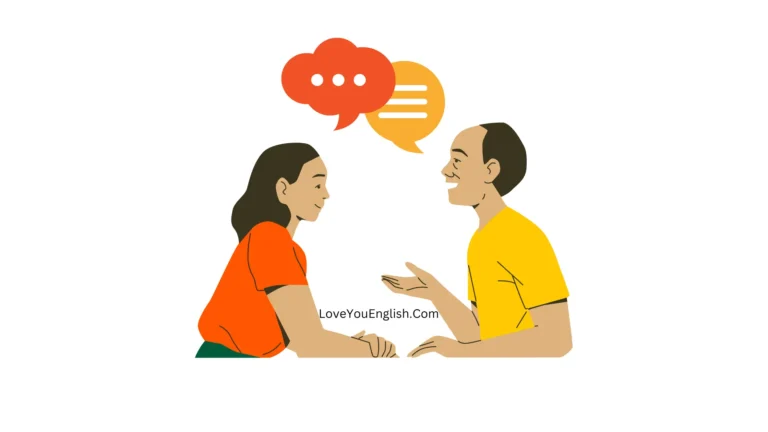English Dialogues About the Role of Technology in Education
Alex: Hey Jamie, have you noticed how much technology is changing schools these days?
Jamie: Oh, absolutely! It’s like every time I turn around, there’s some new gadget or app designed to help students learn. What do you think about it?
Alex: I think it’s amazing! I mean, back when we were in school, all we had were textbooks and chalkboards. Now, students have access to interactive lessons, virtual labs, and even AI tutors!
Jamie: That’s true. I remember struggling with math in high school, and there was nothing like the math-solving apps or online tutorials we have now. Do you think these tools actually make a difference?
Alex: Definitely. For example, there are apps now that can break down complex concepts into bite-sized pieces and even offer practice problems with instant feedback. I wish we’d had that back in the day!
Jamie: Yeah, I think the instant feedback is one of the coolest parts. But I also wonder if technology might distract students rather than help them.
Alex: That’s a valid point. There’s always a risk of distractions, like social media or games. But I think if used correctly, technology can enhance learning. It’s all about finding the right balance.
Jamie: Agreed. And there are some really cool technologies out there. I heard about virtual reality classrooms where you can explore ancient civilizations or dive into the human body!
Alex: That’s like stepping into a science fiction movie! Imagine being able to walk through the streets of ancient Rome or see how the circulatory system works from the inside. It’s like learning through experience.
Jamie: Exactly! And what about online courses? There’s so much flexibility now for people who can’t always attend traditional classes.
Alex: Online courses are a game changer for sure. They offer access to education for people all over the world. You can take a course from a top university without leaving your house!
Jamie: It’s like breaking down barriers to education. But I do wonder, though, if technology might widen the gap between those who have access to it and those who don’t.
Alex: That’s definitely a concern. There’s a digital divide where not everyone has the same access to technology. It’s important that we work on solutions to make these tools available to everyone.
Jamie: True. But overall, I think the potential of technology in education is huge. It’s not just about new tools, but also about new ways of thinking and learning.
Alex: Absolutely. It’s exciting to think about what the future holds for education. Who knows, maybe someday we’ll have fully immersive holographic classrooms!
Jamie: That would be wild! But for now, I’m excited to see how current technologies evolve and what new innovations will come next.
Alex: Same here. It’s an exciting time to be thinking about education and technology. Let’s keep our eyes peeled for the next big thing!
Jamie: Definitely. Who knows? Maybe we’ll be the ones creating the next big educational breakthrough!
Alex: Now that’s a thought! Alright, let’s get back to our day jobs before we come up with any more grand ideas.
Jamie: Sounds good! Catch you later, Alex.
Alex: Catch you later, Jamie!
Read more dialogues:
- English Dialogues About Traffic Jam
- English Dialogues About IPL Matches
- English Dialogues About Diwali
- Spoken English Conversation: Asking For And Giving Directions
- English Dialogues About Concerts
English Dialogues About the Role of Technology in Education
Sam: Hey Taylor, have you been following the latest trends in educational technology? It seems like there’s always something new popping up.
Taylor: Oh, for sure! I’ve been really impressed by how much technology has evolved in the education sector. What’s been catching your eye lately?
Sam: Well, I’m fascinated by how AI is being used to personalize learning experiences. For instance, there are platforms now that adapt the difficulty of lessons based on how well students are doing.
Taylor: That’s so cool! I’ve read about those too. It’s like having a personal tutor that adjusts to each student’s needs in real-time.
Sam: Exactly! And it’s not just about adapting lessons. There are also tools that help with grading, providing feedback, and even predicting which students might need extra help before they even know it.
Taylor: It’s incredible. I remember when teachers had to spend hours grading papers. Now, technology can handle a lot of that and give teachers more time to focus on their students.
Sam: Yes, and it’s also opening up new ways to engage students. Like interactive simulations for science experiments or gamified learning experiences for subjects like history.
Taylor: Gamified learning is such a great idea. Making education feel like a game can really boost motivation and make difficult subjects more approachable.
Sam: I totally agree. Plus, it can help students develop problem-solving skills in a fun environment. But do you think there are any downsides to all this tech in education?
Taylor: Hmm, one concern I have is that students might become too reliant on technology. Like, they might not develop critical thinking skills if they rely too much on AI for answers.
Sam: That’s a valid concern. It’s important for technology to be a tool rather than a crutch. Teachers still need to guide students on how to think critically and solve problems.
Taylor: Right, and there’s also the issue of screen time. Kids are already spending so much time on screens, so finding a balance between tech and traditional methods is key.
Sam: Definitely. I think a blended approach works best—using technology for its strengths while also encouraging traditional learning methods.
Taylor: I agree. And it’s not just about the students, either. There are also tools for teachers to collaborate with each other, share resources, and learn new teaching strategies.
Sam: True! Professional development has also been transformed by technology. Online workshops, webinars, and teaching communities can really support educators.
Taylor: It’s amazing how connected the education community has become. Teachers from all over the world can share ideas and experiences.
Sam: Absolutely. And it’s exciting to think about how these connections could lead to new innovations in teaching methods and tools.
Taylor: Speaking of innovations, have you heard about the new VR experiences for history lessons? Students can “visit” historical events and interact with them.
Sam: I have! It’s like walking through a history book. Imagine learning about the Civil War by actually experiencing a battlefield from the safety of a classroom.
Taylor: That’s such a powerful way to make history come alive for students. It’s like giving them a front-row seat to historical events.
Sam: Exactly. It’s these kinds of technologies that make me optimistic about the future of education. There’s so much potential for growth and improvement.
Taylor: I feel the same way. It’s exciting to think about how technology will continue to evolve and shape the future of learning.
Sam: For sure. And who knows what the next big breakthrough will be? Maybe we’ll see holographic classrooms or AI-driven curriculum design.
Taylor: That would be amazing! But for now, I’m just excited to see how the technologies we have today will be developed and integrated into classrooms.
Sam: Same here. It’s a great time to be in education and see these changes firsthand.
Taylor: Absolutely. Alright, time to get back to work. Catch you later, Sam!
Sam: Catch you later, Taylor!





